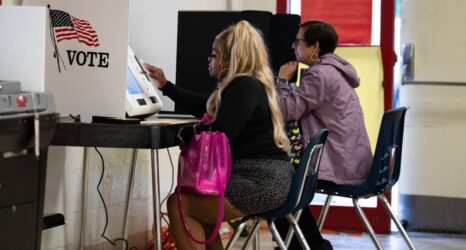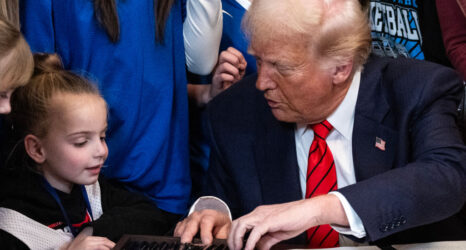In 2005, Democratic pollster Celinda Lake joined forces with her Republican counterpart Kellyanne Conway to study the political lives of U.S. women.
Their unlikely partnership more than a decade ago resulted in the 2005 publishing of “What Women Really Want: How American Women Are Quietly Erasing Political, Racial, Class, and Religious Lines to Change the Way We Live,” a book reflecting on the findings of a series of polls and focus groups centering on U.S. women’s opinions and political behavior. (The two co-authors have not been in touch since mid-2016, according to Lake.)
Conway and Lake painted an optimistic picture for women in “What Women Really Want”—it closes with their finding that 72 percent of women, at that time, felt there had “never been a better time to be a woman in the United States of America.” (Today, only 37 percent of women in the U.S. think it’s a good time to be one.)
Twelve years later, Hillary Clinton’s historic candidacy has shed sobering light on how just hard it is to elect a female to the nation’s highest office. In 2005, Lake and Conway predicted that “a woman will be on the presidential ticket, and her chance of getting elected will be equal to her male rival.” That turned out to be only half true. “Both candidates were very disliked,” Lake told Ms., “but [Hillary Clinton] paid a higher price for it.”
Lake also confessed that she has been dismayed at the pace of progress. In business and in politics, at home and abroad, women’s leadership has stagnated or slowly inched up rather than accelerated, she observed. “I thought that we were going hurry history a bit more.”
All that said, Lake still believes the feminist movement is “alive and well,” though perhaps unique from its past iterations. “I think we’re in a new phase of feminism,” she told Ms.
Despite its broad title, “What Women Really Want” took pains to stress that the female electorate is not a monolithic bloc. Conway and Lake categorize adult women into eight demographic subgroups, which they use as shorthand when describing polling trends—the Feminist Champion, the Suburban Caretaker, the Alpha Striver, the Multicultural Maverick, the Religious Crusader, the Waitress Mom, the Senior Survivor, and the Alienated Single. Describing women voters is difficult, the authors suggested, because there is no single “women’s vote.” In presidential races, women generally vote Democrat, men Republican. But if history is any indication, this gender split is not set in stone.
In 2005, the year “What Women Want” was released, President George W. Bush entered his second term with 48 percent of the women’s vote—the highest percentage for a Republican presidential candidate since 1988, according to exit polls. By contrast, the equivalent figure for President Donald Trump is 41 percent, the lowest share for a winning candidate in recent memory.
Fingers were pointed at white women voters after the 2016 presidential election, but historic data tells a different story. This portion of the electorate, after all, has largely favored Republican presidential candidates—in 2016, they merely continued to vote along party lines. And although Hillary Clinton may not have won a majority of white women voters in her historic bid for the Oval Office, she did win more than any Democrat in recent history—including a majority of college-educated white women—and carried women of color voters by massive margins, according to post-election polls.
In addition, data shows that Trump had the support of a larger share of men who turned out to vote than Republican candidates from years prior. If women were the only ones who voted in the 2016 election, Hillary Clinton would be president.
“Women are an essential element of the progressive majority,” Lake said to Ms., adding that “we’re never going to get swing men.” She is hopeful that the Trump administration will be “very focusing and very uniting” for the left—but also believes female swing voters will be a priority moving forward for both parties.
“I know from experience,” she told Ms., “that Kellyanne will have her sights [on them].”
Opinions expressed here are the author’s own. Ms. is owned by Feminist Majority Foundation, a 501(c)3 organization, and does not endorse candidates.





